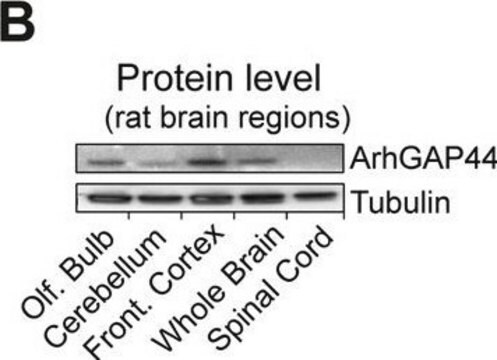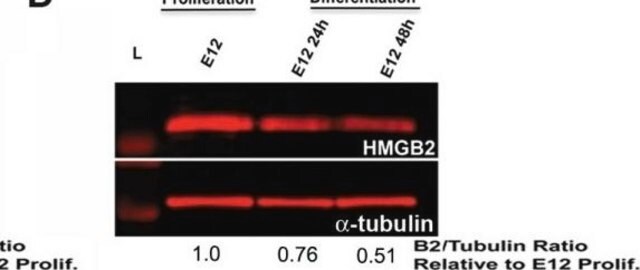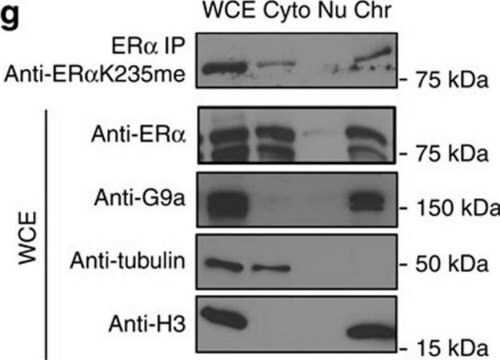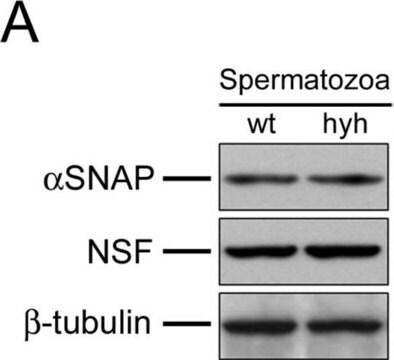T8535
Monoclonal Anti-β-Tubulin I+II antibody produced in mouse
clone JDR.3B8, ascites fluid
Synonyme(s) :
Anti-CDCBM5, Anti-TUBB, Anti-TUBB2
About This Item
Produits recommandés
Source biologique
mouse
Niveau de qualité
Conjugué
unconjugated
Forme d'anticorps
ascites fluid
Type de produit anticorps
primary antibodies
Clone
JDR.3B8, monoclonal
Contient
15 mM sodium azide
Espèces réactives
bovine, pig, chicken, human, rat, mouse
Conditionnement
antibody small pack of 25 μL
Technique(s)
indirect ELISA: suitable
indirect immunofluorescence: suitable
microarray: suitable
western blot: 1:1,000 using a chicken fibroblast extract or a chicken brain microtubule proteins preparation
Isotype
IgG2b
Conditions d'expédition
dry ice
Température de stockage
−20°C
Modification post-traductionnelle de la cible
unmodified
Informations sur le gène
human ... TUBB1(81027) , TUBB2A(7280) , TUBB2C(10383)
mouse ... Tubb1(545486) , Tubb2a(22151) , Tubb2c(227613)
rat ... Tubb2b(291081) , Tubb2c(296554)
Description générale
Spécificité
Immunogène
Application
- immunoblot
- immunofluorescence technique
- immunohistochemistry.
- enzyme linked immunosorbent assay (ELISA)
- immunohistochemistry
- western blotting
- immunoblotting
- dot blot
- immunocytochemistry
Actions biochimiques/physiologiques
Clause de non-responsabilité
Vous ne trouvez pas le bon produit ?
Essayez notre Outil de sélection de produits.
Code de la classe de stockage
12 - Non Combustible Liquids
Classe de danger pour l'eau (WGK)
WGK 3
Point d'éclair (°F)
Not applicable
Point d'éclair (°C)
Not applicable
Faites votre choix parmi les versions les plus récentes :
Déjà en possession de ce produit ?
Retrouvez la documentation relative aux produits que vous avez récemment achetés dans la Bibliothèque de documents.
Les clients ont également consulté
Articles
Microtubules of the eukaryotic cytoskeleton are composed of a heterodimer of α- and β-tubulin. In addition to α-and β-tubulin, several other tubulins have been identified, bringing the number of distinct tubulin classes to seven.
Notre équipe de scientifiques dispose d'une expérience dans tous les secteurs de la recherche, notamment en sciences de la vie, science des matériaux, synthèse chimique, chromatographie, analyse et dans de nombreux autres domaines..
Contacter notre Service technique









